Small molecule inhibitors of protein kinases are extensively utilized in sign transduction analysis and are rising as a significant class of medication. Though interpretation of organic outcomes obtained with these reagents critically is determined by their selectivity, environment friendly strategies for proteome-wide evaluation of kinase inhibitor selectivity haven’t but been reported.
Right here, we handle this vital problem and describe a way for figuring out targets of the extensively used p38 kinase inhibitor SB 203580. Immobilization of an acceptable SB 203580 analogue and totally optimized biochemical situations for affinity chromatography permitted the dramatic enrichment and identification of a number of beforehand unknown protein kinase targets of SB 203580.
In vitro kinase assays confirmed that cyclin G-associated kinase (GAK) and CK1 have been nearly as potently inhibited as p38alpha whereas RICK [Rip-like interacting caspase-like apoptosis-regulatory protein (CLARP) kinase/Rip2/CARDIAK] was much more delicate to inhibition by SB 203580. The mobile kinase exercise of RICK, a recognized sign transducer of inflammatory responses, was already inhibited by submicromolar concentrations of SB 203580 in intact cells.
Due to this fact, our outcomes warrant a reevaluation of the huge quantity of knowledge obtained with SB 203580 and may need important implications on the event of p38 inhibitors as antiinflammatory medicine. Primarily based on the procedures described right here, environment friendly affinity purification methods might be developed for different protein kinase inhibitors, offering essential details about their mobile modes of motion.

Weight problems and immune perform relationships.
The immunological processes concerned within the collaborative defence of organisms are affected by dietary standing. Thus, a optimistic continual imbalance between power consumption and expenditure results in conditions of weight problems, which can affect unspecific and particular immune responses mediated by humoral and cell mediated mechanisms.
Moreover, a number of traces of proof have supported a hyperlink between adipose tissue and immunocompetent cells. This interplay is illustrated in weight problems, the place extra adiposity and impaired immune perform have been described in each people and genetically overweight rodents.
Nevertheless, restricted and sometimes controversial info exist evaluating immunity in overweight and non-obese topics in addition to concerning the mobile and molecular mechanisms implicated. Normally phrases, scientific and epidemiological knowledge assist the proof that the incidence and severity of particular forms of infectious diseases are increased in overweight individuals as in comparison with lean people along with the incidence of poor antibody responses to antigens in obese topics.
Leptin would possibly play a key function in linking dietary standing with T-cell perform. The complexities and heterogeneity of the host defences in regards to the immune response in several dietary circumstances affecting the power steadiness require an integral examine of the immunocompetent cells, their subsets and merchandise in addition to particular and unspecific inducer/regulator techniques. On this context, extra analysis is required to make clear the scientific implications of the alterations induced by weight problems on the immune perform.
Runx1 is required for zebrafish blood and vessel growth and expression of a human RUNX1-CBF2T1 transgene advances a mannequin for research of leukemogenesis.
RUNX1/AML1/CBFA2 is important for definitive hematopoiesis, and chromosomal translocations affecting RUNX1 are incessantly concerned in human leukemias. Consequently, the traditional perform of RUNX1 and its involvement in leukemogenesis stay topic to intensive analysis.
To additional elucidate the function of RUNX1 in hematopoiesis, we cloned the zebrafish ortholog (runx1) and analyzed its perform utilizing this mannequin system. Zebrafish runx1 is expressed in hematopoietic and neuronal cells throughout early embryogenesis. runx1 expression within the lateral plate mesoderm co-localizes with the hematopoietic transcription issue scl, and expression of runx1 is markedly diminished within the zebrafish mutants spadetail and cloche.
Transient expression of runx1 in cloche embryos resulted in partial rescue of the hematopoietic defect. Depletion of Runx1 with antisense morpholino oligonucleotides abrogated the event of each blood and vessels, as demonstrated by lack of circulation, incomplete growth of vasculature and the buildup of immature hematopoietic precursors.
The block in definitive hematopoiesis is just like that noticed in Runx1 knockout mice, implying that zebrafish Runx1 has a perform equal to that in mammals. Our knowledge counsel that zebrafish Runx1 capabilities in each blood and vessel growth on the hemangioblast degree, and contributes to each primitive and definitive hematopoiesis. Depletion of Runx1 additionally induced aberrant axonogenesis and irregular distribution of Rohon-Beard cells, offering the primary practical proof of a task for vertebrate Runx1 in neuropoiesis.
To offer a base for analyzing the function of Runx1 in leukemogenesis, we investigated the results of transient expression of a human RUNX1-CBF2T1 transgene [product of the t(8;21) translocation in acute myeloid leukemia] in zebrafish embryos.
Expression of RUNX1-CBF2T1 induced disruption of regular hematopoiesis, aberrant circulation, inside hemorrhages and mobile dysplasia. These defects reproduce these noticed in Runx1-depleted zebrafish embryos and RUNX1-CBF2T1 knock-in mice. The phenotype obtained with transient expression of RUNX1-CBF2T1 validates the zebrafish as a mannequin system to check t(8;21)-mediated leukemogenesis.
From in vivo to in silico biology and again.
The large acquisition of knowledge in molecular and mobile biology has led to the renaissance of an outdated matter: simulations of organic techniques. Simulations, more and more paired with experiments, are being efficiently and routinely utilized by computational biologists to know and predict the quantitative behaviour of complicated techniques, and to drive new experiments.
However, many experimentalists nonetheless think about simulations an esoteric self-discipline just for initiates. Suspicion in the direction of simulations ought to dissipate as the restrictions and benefits of their utility are higher appreciated, opening the door to their everlasting adoption in on a regular basis analysis.
Proteome-wide evaluation of lysine acetylation suggests its broad regulatory scope in Saccharomyces cerevisiae.
Submit-translational modification of proteins by lysine acetylation performs vital regulatory roles in residing cells. The budding yeast Saccharomyces cerevisiae is a extensively used unimobile eukaryotic mannequin organism in biomedical analysis.
S. cerevisiae accommodates a number of evolutionary conserved lysine acetyltransferases and deacetylases. Nevertheless, just a few dozen acetylation websites in S. cerevisiae are recognized, presenting a significant impediment for additional understanding the regulatory roles of acetylation on this organism.

Right here we use excessive decision mass spectrometry to determine about 4000 lysine acetylation websites in S. cerevisiae. Acetylated proteins are implicated within the regulation of numerous cytoplasmic and nuclear processes together with chromatin group, mitochondrial metabolism, and protein synthesis.
Bioinformatic evaluation of yeast acetylation websites reveals that acetylated lysines are considerably extra conserved in contrast with nonacetylated lysines. A big fraction of the conserved acetylation websites are current on proteins concerned in mobile metabolism, protein synthesis, and protein folding. Moreover, quantification of the Rpd3-regulated acetylation websites recognized a number of beforehand recognized, in addition to new putative substrates of this deacetylase.
 Superoxide Dismutase Antibody |
|||
| abx021109-1mg | Abbexa | 1 mg | EUR 1111.2 |
 Superoxide Dismutase Antibody |
|||
| abx022850-1ml | Abbexa | 1 ml | EUR 1053.6 |
 Superoxide Dismutase Antibody |
|||
| GWB-F8DC97 | GenWay Biotech | 1 ml | Ask for price |
) Superoxide Dismutase 3 Antibody (SOD3) |
|||
| F49928-0.08ML | NSJ Bioreagents | 0.08 ml | EUR 140.25 |
|
Description: SOD3 is a member of the superoxide dismutase(SOD) protein family. SODs are antioxidant enzymes that catalyze the dismutation of two superoxide radicals into hydrogen peroxide and oxygen. This protein is thought to protect the brain, lungs, and other tissues from oxidative stress. The protein is secreted into the extracellular space and forms a glycosylated homotetramer that is anchored to the extracellular matrix (ECM) and cell surfaces through an interaction with heparan sulfate proteoglycan and collagen. A fraction of the protein is cleaved near the C-terminus before secretion to generate circulating tetramers that do not interact with the ECM. |
|||
) Superoxide Dismutase 3 Antibody (SOD3) |
|||
| F52953-0.08ML | NSJ Bioreagents | 0.08 ml | EUR 140.25 |
|
Description: SOD3 protect the extracellular space from toxic effect of reactive oxygen intermediates by converting superoxide radicals into hydrogen peroxide and oxygen. |
|||
 SOD3 Antibody / Superoxide Dismutase 3 |
|||
| R30999 | NSJ Bioreagents | 100 ug | EUR 356.15 |
|
Description: Superoxide Dismutase 3 is an enzyme that in humans is encoded by the SOD3 gene. This gene encodes a member of the superoxide dismutase (SOD) protein family. SODs are antioxidant enzymes that catalyze the dismutation of two superoxide radicals into hydrogen peroxide and oxygen. Hendrickson et al.(1990) mapped the SOD3 gene to 4pter-q21 by a study of somatic cell hybrids. Stern et al.(2003) narrowed the assignment to 4p15.3-p15.1 by somatic cell and radiation hybrid analysis, linkage mapping, and FISH. The product of this gene is though to protect the brain, lungs, and other tissues from oxidative stress. The protein is secreted into the extracellular space and forms a glycosylated homotetramer that is anchored to the extracellular matrix(ECM) and cell surfaces through an interaction with heparan sulfate proteoglycan and collagen. A fraction of the protein is cleaved near the C-terminus before secretion to generate circulating tetramers that do not interact with the ECM. |
|||
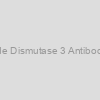 Superoxide Dismutase 3 Antibody / SOD3 |
|||
| R31796 | NSJ Bioreagents | 100 ug | EUR 356.15 |
|
Description: SOD3 (SUPEROXIDE DISMUTASE 3), also called SUPEROXIDE DISMUTASE, EXTRACELLULAR, EC-SOD, and Cu-Zn, is an enzyme that in humans is encoded by the SOD3 gene. This gene encodes a member of the superoxide dismutase (SOD) protein family. SODs are antioxidant enzymes that catalyze the dismutation of two superoxide radicals into hydrogen peroxide and oxygen. Hendrickson et al. (1990) mapped the SOD3 gene to 4pter-q21 by a study of somatic cell hybrids. Stern et al. (2003) narrowed the assignment to 4p15.3-p15.1 by somatic cell and radiation hybrid analysis, linkage mapping, and FISH. The product of this gene is thought to protect the brain, lungs, and other tissues from oxidative stress. The protein is secreted into the extracellular space and forms a glycosylated homotetramer that is anchored to the extracellular matrix (ECM) and cell surfaces through an interaction with heparan sulfate proteoglycan and collagen. A fraction of the protein is cleaved near the C-terminus before secretion to generate circulating tetramers that do not interact with the ECM. |
|||
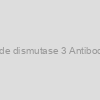 Superoxide dismutase 3 Antibody / Sod3 |
|||
| RQ6518 | NSJ Bioreagents | 100ug | EUR 356.15 |
|
Description: SOD3 (SUPEROXIDE DISMUTASE 3), also called SUPEROXIDE DISMUTASE, EXTRACELLULAR, EC-SOD, and Cu-Zn, is an enzyme that in humans is encoded by the SOD3 gene. This gene encodes a member of the superoxide dismutase (SOD) protein family. SODs are antioxidant enzymes that catalyze the dismutation of two superoxide radicals into hydrogen peroxide and oxygen. Hendrickson et al. (1990) mapped the SOD3 gene to 4pter-q21 by a study of somatic cell hybrids. Stern et al. (2003) narrowed the assignment to 4p15.3-p15.1 by somatic cell and radiation hybrid analysis, linkage mapping, and FISH. The product of this gene is thought to protect the brain, lungs, and other tissues from oxidative stress. The protein is secreted into the extracellular space and forms a glycosylated homotetramer that is anchored to the extracellular matrix (ECM) and cell surfaces through an interaction with heparan sulfate proteoglycan and collagen. A fraction of the protein is cleaved near the C-terminus before secretion to generate circulating tetramers that do not interact with the ECM. |
|||
 Superoxide Dismutase 3 Antibody / SOD3 |
|||
| RQ4091 | NSJ Bioreagents | 100 ug | EUR 356.15 |
|
Description: SOD3 (Superoxide Dismutase 3), also called Superoxide Dismutase extracellular, EC-SOD, and Cu-Zn, is an enzyme that in humans is encoded by the SOD3 gene. This gene encodes a member of the superoxide dismutase (SOD) protein family. SODs are antioxidant enzymes that catalyze the dismutation of two superoxide radicals into hydrogen peroxide and oxygen. Hendrickson et al. (1990) mapped the SOD3 gene to 4pter-q21 by a study of somatic cell hybrids. Stern et al. (2003) narrowed the assignment to 4p15.3-p15.1 by somatic cell and radiation hybrid analysis, linkage mapping, and FISH. The product of this gene is thought to protect the brain, lungs, and other tissues from oxidative stress. The protein is secreted into the extracellular space and forms a glycosylated homotetramer that is anchored to the extracellular matrix (ECM) and cell surfaces through an interaction with heparan sulfate proteoglycan and collagen. A fraction of the protein is cleaved near the C-terminus before secretion to generate circulating tetramers that do not interact with the ECM. |
|||
 Antibody) Superoxide Dismutase 3 (SOD3) Antibody |
|||
| abx005295-100l | Abbexa | 100 µl | EUR 400 |
 Antibody) Superoxide Dismutase 3 (SOD3) Antibody |
|||
| abx005295-20l | Abbexa | 20 µl | EUR 175 |
 Antibody) Superoxide Dismutase 3 (SOD3) Antibody |
|||
| abx005295-50l | Abbexa | 50 µl | EUR 275 |
 Antibody) Superoxide Dismutase 3 (SOD3) Antibody |
|||
| abx103950-100g | Abbexa | 100 µg | EUR 675 |
 Antibody) Superoxide Dismutase 3 (SOD3) Antibody |
|||
| abx103950-20g | Abbexa | 20 µg | EUR 250 |
 Antibody) Superoxide Dismutase 3 (SOD3) Antibody |
|||
| abx103950-50g | Abbexa | 50 µg | EUR 312.5 |
 Antibody) Superoxide Dismutase 3 (SOD3) Antibody |
|||
| abx103951-100g | Abbexa | 100 µg | EUR 687.5 |
 Antibody) Superoxide Dismutase 3 (SOD3) Antibody |
|||
| abx103951-20g | Abbexa | 20 µg | EUR 262.5 |
 Antibody) Superoxide Dismutase 3 (SOD3) Antibody |
|||
| abx103951-50g | Abbexa | 50 µg | EUR 325 |
 Antibody) Superoxide Dismutase 3 (SOD3) Antibody |
|||
| abx103952-100g | Abbexa | 100 µg | EUR 725 |
 Antibody) Superoxide Dismutase 3 (SOD3) Antibody |
|||
| abx103952-20g | Abbexa | 20 µg | EUR 262.5 |
 Antibody) Superoxide Dismutase 3 (SOD3) Antibody |
|||
| abx103952-50g | Abbexa | 50 µg | EUR 337.5 |
 Antibody) Superoxide Dismutase 3 (SOD3) Antibody |
|||
| abx115903-100g | Abbexa | 100 µg | Ask for price |
 Antibody) Superoxide Dismutase 3 (SOD3) Antibody |
|||
| abx115903-10g | Abbexa | 10 µg | EUR 612.5 |
 Antibody) Superoxide Dismutase 3 (SOD3) Antibody |
|||
| abx115903-200g | Abbexa | 200 µg | Ask for price |
 Antibody) Superoxide Dismutase 3 (SOD3) Antibody |
|||
| abx129985-100l | Abbexa | 100 µl | EUR 262.5 |
 Antibody) Superoxide Dismutase 3 (SOD3) Antibody |
|||
| abx129985-1ml | Abbexa | 1 ml | EUR 725 |
 Antibody) Superoxide Dismutase 3 (SOD3) Antibody |
|||
| abx129985-200l | Abbexa | 200 µl | EUR 337.5 |
 Antibody) Superoxide Dismutase 3 (SOD3) Antibody |
|||
| abx174663-1ml | Abbexa | 1 ml | EUR 262.5 |
 Antibody) Superoxide Dismutase 3 (SOD3) Antibody |
|||
| abx174664-100l | Abbexa | 100 µl | EUR 775 |
 Antibody) Superoxide Dismutase 3 (SOD3) Antibody |
|||
| abx174664-1ml | Abbexa | 1 ml | Ask for price |
 Antibody) Superoxide Dismutase 3 (SOD3) Antibody |
|||
| abx174664-200l | Abbexa | 200 µl | Ask for price |
 Antibody) Superoxide Dismutase 3 (SOD3) Antibody |
|||
| abx174665-100l | Abbexa | 100 µl | EUR 775 |
 Antibody) Superoxide Dismutase 3 (SOD3) Antibody |
|||
| abx174665-1ml | Abbexa | 1 ml | Ask for price |
 Antibody) Superoxide Dismutase 3 (SOD3) Antibody |
|||
| abx174665-200l | Abbexa | 200 µl | Ask for price |
 Antibody) Superoxide Dismutase 3 (SOD3) Antibody |
|||
| abx305397-100g | Abbexa | 100 µg | EUR 362.5 |
 Antibody) Superoxide Dismutase 3 (SOD3) Antibody |
|||
| abx305397-20g | Abbexa | 20 µg | EUR 162.5 |
 Antibody) Superoxide Dismutase 3 (SOD3) Antibody |
|||
| abx305397-50g | Abbexa | 50 µg | EUR 250 |
 Antibody) Superoxide Dismutase 3 (SOD3) Antibody |
|||
| abx033034-400l | Abbexa | 400 µl | EUR 518.75 |
 Antibody) Superoxide Dismutase 3 (SOD3) Antibody |
|||
| abx320304-100l | Abbexa | 100 µl | EUR 350 |
 Antibody) Superoxide Dismutase 3 (SOD3) Antibody |
|||
| abx320304-50l | Abbexa | 50 µl | EUR 237.5 |
 Antibody) Superoxide Dismutase 3 (SOD3) Antibody |
|||
| abx448432-1096tests | Abbexa | 10 × 96 tests | Ask for price |
 Antibody) Superoxide Dismutase 3 (SOD3) Antibody |
|||
| abx448432-596tests | Abbexa | 5 × 96 tests | Ask for price |
 Antibody) Superoxide Dismutase 3 (SOD3) Antibody |
|||
| abx448432-96tests | Abbexa | 96 tests | EUR 537.5 |
 Human Superoxide Dismutase |
|||
| 90240-A | BPS Bioscience | 20 µg | EUR 130 |
|
Description: SOD is a disulfide-linked homodimeric protein consisting of two 154 amino acid residues, and migrates as an approximately 31 kDa protein under non-reducing and as 16 kDa under reducing conditions in SDS-PAGE. Optimized DNA sequence encoding Human Superoxide Dismutase mature chain was expressed in E. coli. |
|||
 Human Superoxide Dismutase |
|||
| 90240-B | BPS Bioscience | 100 µg | EUR 205 |
|
Description: SOD is a disulfide-linked homodimeric protein consisting of two 154 amino acid residues, and migrates as an approximately 31 kDa protein under non-reducing and as 16 kDa under reducing conditions in SDS-PAGE. Optimized DNA sequence encoding Human Superoxide Dismutase mature chain was expressed in E. coli. |
|||
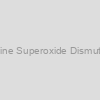 Bovine Superoxide Dismutase |
|||
| IBOSODLY10MG | Innovative research | each | EUR 274 |
|
Description: Bovine Superoxide Dismutase |
|||
 Bovine Superoxide Dismutase |
|||
| IBOSODLY2MG | Innovative research | each | EUR 96 |
|
Description: Bovine Superoxide Dismutase |
|||
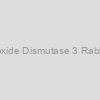 Superoxide Dismutase 3 Rabbit pAb |
|||
| E2382024 | EnoGene | 100ul | EUR 225 |
|
Description: Available in various conjugation types. |
|||
 Superoxide Dismutase 3 Rabbit mAb |
|||
| 56236 | SAB | 100ul | EUR 339 |
 Superoxide Dismutase 3 Rabbit mAb |
|||
| E2R382024 | EnoGene | 100ul | EUR 275 |
|
Description: Biotin-Conjugated, FITC-Conjugated , AF350 Conjugated , AF405M-Conjugated ,AF488-Conjugated, AF514-Conjugated ,AF532-Conjugated, AF555-Conjugated ,AF568-Conjugated , HRP-Conjugated, AF405S-Conjugated, AF405L-Conjugated , AF546-Conjugated, AF594-Conjugated , AF610-Conjugated, AF635-Conjugated , AF647-Conjugated , AF680-Conjugated , AF700-Conjugated , AF750-Conjugated , AF790-Conjugated , APC-Conjugated , PE-Conjugated , Cy3-Conjugated , Cy5-Conjugated , Cy5.5-Conjugated , Cy7-Conjugated Antibody |
|||
 Superoxide Dismutase protein |
|||
| 30R-2714 | Fitzgerald | 100 ug | EUR 434 |
|
Description: Purified recombinant Human Superoxide Dismutase protein |
|||
 Superoxide Dismutase 2 antibody |
|||
| 10R-7478 | Fitzgerald | 100 ul | EUR 471.6 |
|
Description: Mouse monoclonal Superoxide Dismutase 2 antibody |
|||
 Superoxide Dismutase 2 antibody |
|||
| 10R-7479 | Fitzgerald | 100 ul | EUR 471.6 |
|
Description: Mouse monoclonal Superoxide Dismutase 2 antibody |
|||
 Superoxide Dismutase 1 antibody |
|||
| 10R-7482 | Fitzgerald | 100 ul | EUR 471.6 |
|
Description: Mouse monoclonal Superoxide Dismutase 1 antibody |
|||
 Superoxide Dismutase 1 antibody |
|||
| 10R-7483 | Fitzgerald | 100 ul | EUR 471.6 |
|
Description: Mouse monoclonal Superoxide Dismutase 1 antibody |
|||
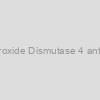 Superoxide Dismutase 4 antibody |
|||
| 10R-7484 | Fitzgerald | 100 ul | EUR 471.6 |
|
Description: Mouse monoclonal Superoxide Dismutase 4 antibody |
|||
 Superoxide Dismutase 4 antibody |
|||
| 10R-7485 | Fitzgerald | 100 ul | EUR 471.6 |
|
Description: Mouse monoclonal Superoxide Dismutase 4 antibody |
|||
 Superoxide Dismutase 1 Antibody |
|||
| 49350 | SAB | 100ul | EUR 499 |
 Superoxide Dismutase 1 Antibody |
|||
| 49350-100ul | SAB | 100ul | EUR 399.6 |
 Superoxide Dismutase 1 Antibody |
|||
| 49350-50ul | SAB | 50ul | EUR 286.8 |
 Antibody (PE)) Superoxide Dismutase 3 (SOD3) Antibody (PE) |
|||
| abx444263-100g | Abbexa | 100 µg | EUR 600 |
 Antibody (PE)) Superoxide Dismutase 3 (SOD3) Antibody (PE) |
|||
| abx446278-100g | Abbexa | 100 µg | EUR 637.5 |
 Antibody) Superoxide Dismutase (SOD) Antibody |
|||
| abx146590-1096tests | Abbexa | 10 × 96 tests | Ask for price |
 Antibody) Superoxide Dismutase (SOD) Antibody |
|||
| abx146590-596tests | Abbexa | 5 × 96 tests | Ask for price |
 Antibody) Superoxide Dismutase (SOD) Antibody |
|||
| abx146590-96tests | Abbexa | 96 tests | EUR 350 |
 Superoxide dismutase [Cu-Zn] |
|||
| AP87709 | SAB | 1mg | EUR 2640 |
 Superoxide dismutase [Cu-Zn] |
|||
| AP88063 | SAB | 1mg | EUR 2640 |
 Superoxide dismutase [Cu-Zn] |
|||
| AP88133 | SAB | 1mg | EUR 2640 |
 Superoxide dismutase [Cu-Zn] |
|||
| AP88134 | SAB | 1mg | EUR 2640 |
 Superoxide dismutase [Cu-Zn] |
|||
| AP88279 | SAB | 1mg | EUR 2640 |
 Superoxide dismutase [Cu-Zn] |
|||
| AP78584 | SAB | 1mg | EUR 2640 |
 Superoxide dismutase [Cu-Zn] |
|||
| AP78585 | SAB | 1mg | EUR 2640 |
 Antibody (HRP)) Superoxide Dismutase 3 (SOD3) Antibody (HRP) |
|||
| abx305398-100g | Abbexa | 100 µg | EUR 362.5 |
 Antibody (HRP)) Superoxide Dismutase 3 (SOD3) Antibody (HRP) |
|||
| abx305398-20g | Abbexa | 20 µg | EUR 162.5 |
 Antibody (HRP)) Superoxide Dismutase 3 (SOD3) Antibody (HRP) |
|||
| abx305398-50g | Abbexa | 50 µg | EUR 250 |
 Antibody (APC)) Superoxide Dismutase 3 (SOD3) Antibody (APC) |
|||
| abx442579-100g | Abbexa | 100 µg | EUR 600 |
 Antibody (HRP)) Superoxide Dismutase 3 (SOD3) Antibody (HRP) |
|||
| abx443420-100l | Abbexa | 100 µl | EUR 587.5 |
 Antibody (APC)) Superoxide Dismutase 3 (SOD3) Antibody (APC) |
|||
| abx446272-100g | Abbexa | 100 µg | EUR 650 |
 Antibody (HRP)) Superoxide Dismutase 3 (SOD3) Antibody (HRP) |
|||
| abx446275-100g | Abbexa | 100 µg | EUR 625 |
 Antibody) Superoxide Dismutase (SOD1) Antibody |
|||
| abx414380-01mg | Abbexa | 0.1 mg | EUR 526.8 |
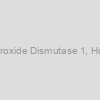 Superoxide Dismutase 1, Human |
|||
| LF-P0010 | Abfrontier | 0.5 mg | EUR 242.4 |
|
Description: Superoxide Dismutase 1, Human protein |
|||
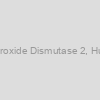 Superoxide Dismutase 2, Human |
|||
| LF-P0013 | Abfrontier | 0.5 mg | EUR 242.4 |
|
Description: Superoxide Dismutase 2, Human protein |
|||
 Superoxide Dismutase 4, Human |
|||
| LF-P0020 | Abfrontier | 0.5 mg | EUR 242.4 |
|
Description: Superoxide Dismutase 4, Human protein |
|||
 Superoxide Dismutase 4, mouse |
|||
| LF-P0410 | Abfrontier | 0.5 mg | EUR 363.6 |
|
Description: Superoxide Dismutase 4, mouse protein |
|||
 Antibody (FITC)) Superoxide Dismutase 3 (SOD3) Antibody (FITC) |
|||
| abx305399-100g | Abbexa | 100 µg | EUR 362.5 |
 Antibody (FITC)) Superoxide Dismutase 3 (SOD3) Antibody (FITC) |
|||
| abx305399-20g | Abbexa | 20 µg | EUR 162.5 |
 Antibody (FITC)) Superoxide Dismutase 3 (SOD3) Antibody (FITC) |
|||
| abx305399-50g | Abbexa | 50 µg | EUR 250 |
 Antibody (FITC)) Superoxide Dismutase 3 (SOD3) Antibody (FITC) |
|||
| abx274035-05ml | Abbexa | 0.5 ml | EUR 412.5 |
 Antibody (FITC)) Superoxide Dismutase 3 (SOD3) Antibody (FITC) |
|||
| abx443140-100g | Abbexa | 100 µg | EUR 587.5 |
 Antibody Pair) Superoxide Dismutase 3 (SOD3) Antibody Pair |
|||
| abx370059-100g | Abbexa | 100 µg | EUR 1350 |
 Antibody Pair) Superoxide Dismutase 3 (SOD3) Antibody Pair |
|||
| abx370555-100g | Abbexa | 100 µg | EUR 2312.5 |
 Antibody Pair) Superoxide Dismutase 3 (SOD3) Antibody Pair |
|||
| abx370555-50g | Abbexa | 50 µg | EUR 1437.5 |
 Antibody (FITC)) Superoxide Dismutase 3 (SOD3) Antibody (FITC) |
|||
| abx446274-100g | Abbexa | 100 µg | EUR 637.5 |
 Antibody (1H12)) Superoxide Dismutase 3 (SOD-3) Antibody (1H12) |
|||
| 6170-100 | Biovision | each | EUR 483.6 |
 Superoxide Dismutase Assay Kit |
|||
| abx096009-100Assays | Abbexa | 100 Assays | EUR 566.4 |
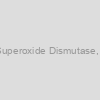 SOD, Superoxide Dismutase, human |
|||
| RC512-12 | Bio Basic | 20ug | EUR 125.26 |
 Superoxide Dismutase Assay Kit |
|||
| abx096009-100l | Abbexa | 100 µl | EUR 350 |
 Superoxide Dismutase Assay Kit |
|||
| abx096009-1ml | Abbexa | 1 ml | Ask for price |
 Superoxide Dismutase Assay Kit |
|||
| abx096009-200l | Abbexa | 200 µl | Ask for price |
 Antibody (PerCP)) Superoxide Dismutase 3 (SOD3) Antibody (PerCP) |
|||
| abx443982-100g | Abbexa | 100 µg | EUR 600 |
 Antibody (PerCP)) Superoxide Dismutase 3 (SOD3) Antibody (PerCP) |
|||
| abx446277-100g | Abbexa | 100 µg | EUR 650 |
 IgG) Rabbit Anti-human Superoxide Dismutase 3 (SOD3) IgG |
|||
| SOD32-A | Alpha Diagnostics | 100 ug | EUR 578.4 |
 Antibody (Biotin)) Superoxide Dismutase 3 (SOD3) Antibody (Biotin) |
|||
| abx305400-100g | Abbexa | 100 µg | EUR 362.5 |
 Antibody (Biotin)) Superoxide Dismutase 3 (SOD3) Antibody (Biotin) |
|||
| abx305400-20g | Abbexa | 20 µg | EUR 162.5 |
 Antibody (Biotin)) Superoxide Dismutase 3 (SOD3) Antibody (Biotin) |
|||
| abx305400-50g | Abbexa | 50 µg | EUR 250 |
 Antibody (Biotin)) Superoxide Dismutase 3 (SOD3) Antibody (Biotin) |
|||
| abx271786-1ml | Abbexa | 1 ml | EUR 737.5 |
 Antibody (Biotin)) Superoxide Dismutase 3 (SOD3) Antibody (Biotin) |
|||
| abx271786-200l | Abbexa | 200 µl | EUR 337.5 |
 Antibody (Biotin)) Superoxide Dismutase 3 (SOD3) Antibody (Biotin) |
|||
| abx272594-100l | Abbexa | 100 µl | EUR 337.5 |
 Antibody (Biotin)) Superoxide Dismutase 3 (SOD3) Antibody (Biotin) |
|||
| abx272594-1ml | Abbexa | 1 ml | Ask for price |
 Antibody (Biotin)) Superoxide Dismutase 3 (SOD3) Antibody (Biotin) |
|||
| abx272594-200l | Abbexa | 200 µl | EUR 762.5 |
 Antibody (Biotin)) Superoxide Dismutase 3 (SOD3) Antibody (Biotin) |
|||
| abx442860-100g | Abbexa | 100 µg | EUR 600 |
 Antibody (Biotin)) Superoxide Dismutase 3 (SOD3) Antibody (Biotin) |
|||
| abx446273-100g | Abbexa | 100 µg | EUR 637.5 |
 Superoxide Dismutase Cu/Zn Antibody |
|||
| GWB-698256 | GenWay Biotech | 1 mg | Ask for price |
) Chicken Superoxide Dismutase (SOD) |
|||
| QY-E80142 | Qayee Biotechnology | 96T | EUR 511.2 |
 Antibody (ATTO594)) Superoxide Dismutase 3 (SOD3) Antibody (ATTO594) |
|||
| abx440893-100g | Abbexa | 100 µg | EUR 600 |
 Antibody (ATTO390)) Superoxide Dismutase 3 (SOD3) Antibody (ATTO390) |
|||
| abx440050-100g | Abbexa | 100 µg | EUR 600 |
 Antibody (ATTO488)) Superoxide Dismutase 3 (SOD3) Antibody (ATTO488) |
|||
| abx440331-100g | Abbexa | 100 µg | EUR 600 |
 Antibody (ATTO390)) Superoxide Dismutase 3 (SOD3) Antibody (ATTO390) |
|||
| abx446263-100g | Abbexa | 100 µg | EUR 662.5 |
 Antibody (ATTO488)) Superoxide Dismutase 3 (SOD3) Antibody (ATTO488) |
|||
| abx446264-100g | Abbexa | 100 µg | EUR 650 |
 Antibody (ATTO594)) Superoxide Dismutase 3 (SOD3) Antibody (ATTO594) |
|||
| abx446266-100g | Abbexa | 100 µg | EUR 650 |
 Protein) Rat Superoxide Dismutase 3 (SOD3) Protein |
|||
| abx069200-10U | Abbexa | 10 U | EUR 500 |
 Protein) Rat Superoxide Dismutase 3 (SOD3) Protein |
|||
| abx069200-1U | Abbexa | 1 U | EUR 200 |
 Protein) Rat Superoxide Dismutase 3 (SOD3) Protein |
|||
| abx069200-25U | Abbexa | 2.5 U | EUR 350 |
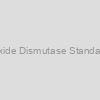 Superoxide Dismutase Standard, 1EA |
|||
| C098-1EA | Arbor Assays | 1EA | EUR 109 |
 Native Plant Superoxide Dismutase |
|||
| NATE-1619 | Creative Enzymes | 1g | EUR 324 |
 Antibody) Superoxide Dismutase (SOD-1) Antibody |
|||
| 3458-100 | Biovision | each | EUR 392.4 |
Rpd3 deficiency elevated acetylation of the SAGA (Spt-Ada-Gcn5-Acetyltransferase) complicated subunit Sgf73 on Okay33. This acetylation website is situated inside a crucial regulatory area in Sgf73 that interacts with Ubp8 and is concerned within the activation of the Ubp8-containing histone H2B deubiquitylase complicated. Our knowledge supplies the primary world survey of acetylation in budding yeast, and suggests a wide-ranging regulatory scope of this modification. The offered knowledgeset might function an vital useful resource for the practical evaluation of lysine acetylation in eukaryotes.

